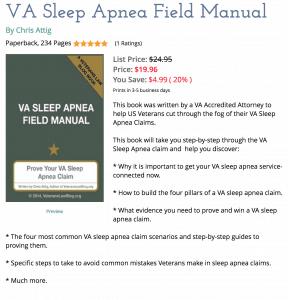
In a nutshell, it is the key to winning your VA claim or appeal. The rating decisions sent out by the VA and the BVA decisions sound out by the Board are incredibly vague and unhelpful. They are supposed to provide the reasons your claim or appeal is denied, but what they typically tell the veteran how competent the rater or BVA judge is at cutting and pasting large blocks of law from the US Code or the Code of Federal Regulations.
The C-File, however, will (with a little study and analysis) tell you exactly why the VA is denying your claim, what evidence they haven’t received or haven’t looked at and more. Some of you are old enough to remember GI Joe, who used to say, “Knowing is half the battle.”
When it comes to the VA Claims file, however, knowing is almost all of battle.
What is a VA C-File?
The VA claims file – what advocates have long called the C-File, is (in theory) the complete copy of the record in your VA disability claim. As your navigate the VA claims process you will submit additional forms and evidence to the VA and those documents will be added to your C-file.
The sizes of C-Files can be dramatically different – some files are hundreds of pages, others C-Files are tens of thousands of pages long.
The way in which the VA stores veterans’ C-files are stored has changed a lot over the last decade. When I first started representing veterans as a VA disability attorney, the VA only produced paper C-Files. The records were stored in paper files in the VA Regional Office servicing the veteran’s disability claims. I’m sure the VA had some rhyme or reason to the system they used to ‘organize’ paper C-files, but I never figured it out. Honestly, I always thought the VA rater took all the paper, tossed it into the air, and then sent to the veteran in whatever order the pages of the VA claims file fell to the ground.
Thanks in no small part to the Veterans Law Blog® training course – How to Get and Use your VA C-File – the VA was inundated with requests for paper files under the Freedom of Information Act (FOIA). The VA accelerated their efforts to digitize their VA claims file storage systems throughout the 2010-2020 period.
Now, there aren’t many paper VA C-files left – at least not for living veterans. The VA sent the paper files for each veteran to the Evidence Intake Center, scanned the paper and uploaded the veterans claims file to a system known as VBMS. Officially, that stands for “Veterans Benefits Management System.”
Among veterans disability attorneys, VBMS has a slightly more pejorative meaning.
Bottom line, when you request your VA claims file, the VA is going to send it to you on a CD.
Attorneys and agents and VSOs, however, have another (and quicker) way to access their records in a VA Claims file. When I send the VA a copy of VA Form 21-22a signed by my new client, I get access to their complete claims file – digitally – through my access to the VBMS system. The VA views this version – they call the VBMS claims file the “eFolder” – as the official file for VA claims.
It took me over a year to get that access to VBMS – from background checks, to training and testing on VA claims and digital security – it was a grueling process. I’m glad attorneys and VSOs and agents have digital access to their clients’ C-files, but I sure wish the VA would get their s**t together and give every veteran access to their digital claims file. :12
What documents does the VA store in the veteran’s C-File?
Basically, anything that you send to the VA, and anything that the VA develops in your claim should be in your VA c-file.
Here are some examples:
1. DD-214
I don’t need to tell any veteran what their DD-214 is.
From the perspective of the VA and the veterans disability attorney, however, the DD-214 tells the abridged story of your military service: dates/branches of service, nature of military discharge, military occupational speciality (MOS), dates of overseas service, medals and awards received, and more.
2. VA Claim Forms
Every VA form you send it to the VA should – in theory – be in your VA Claims file.
That said, it is not at all unusual for VA Forms to be missing from your C-File – sometimes, these documents disappear at very convenient times for the VA.
Assuming you did not keep copies of every VA Form you sent into the VA – start doing that, by the way – you can tell a VA Form is missing from your VA Claims file based on the context. Sometimes a VA rater’s decision or notes or emails in the claims file will reference a document that is not found in the veterans claims file.
3. Adjudicatory Documents
If you have filed a claim at any time since leaving service, your Claims file will include what I call “adjudicatory documents” – those documents that the VA uses to decide your claims: Rating Decisions and their accompanying Notice of Action letters, Statements of Case and Supplemental Statements of Case (if your claim was in the Legacy system), BVA decisions, and Higher Level Review decisions.
4. Service, VA and Private Medical Records
If you have submitted them, or if the VA actually fulfilled its duty to assist, your VA claims file will include some medical records. There are, generally, three types of medical records in any veteran’s claim: service medical records, VA medical records (if you get your treatment at the VHA), and private medical records (for other than VA medical treatment – before, during or after service).
Why is it CRITICAL to get a copy of your C-File?
In a phrase, because of the documents that are in your VA C-File.
But more important, improving your VA disability claim starts with this document – your C-File is so important to your VA claim:
Every rater in your claim will look at the C-File.
Every doctor that issues a C&P medical opinion will look at your claims folder (digitally, of course).
Every Decision Review Officer (DRO) in a Higher Level Review conference will review your C-File.
Every BVA Judge that reviews your VA appeal will look at it.
And when you get to the Veterans Court – should you get to the Veterans Court – your C-File becomes the Record Before the Agency (RBA) that is used by the parties to argue to the CAVC that the BVA erred in some way in its decision on your appeal.
Given that everybody who adjudicates your VA claim will see your VA C-file, shouldn’t you know what’s in it?
Here’s a true story.
A few years back, I overheard one of my paralegals talking about a C-File that she was organizing prior to an attorney’s review. She said that the veteran was described throughout the VA disability claim, as both:
- a 60 y/o caucasian male
- a 45 y/o Black man
Think something is wrong with this Veteran’s C-File?
Yes, and thank you, Captain Obvious.
Do you think the VA is looking at the wrong records in that appeal? Ummm, yes.
But the VA doesn’t need the wrong records to misinterpret – often to the veteran’s disadvantage (and even more to the Black veterans disadvantage) – a VA Claims file and deny a VA disability claim.
So here’s the point: you need to know what is in your VA C-file – because THAT is what the VA is using to deny your disability claim.
This is particularly critical for veterans survivors – you cannot effectively advocate for an accrued benefits claim, or make a thorough complete DIC claim without having access to the record of what the deceased veteran has already done. The only way to find that is in the C-file.
How to Obtain a copy of your VA Claims File
Subscribers to the Veterans Law Blog® get FREE access to our training course – “How to Get and Use your VA C-File”
The course is several hours long, and includes 17 lessons, and all the templates you will need not just to request your VA claims file, but how to sue the VA under the Freedom of Information Act (FOIA) if they don’t produce it to you in a reasonable period of time.
If you are a monthly or annual subscriber to the Veterans Law Blog®, click here to start taking your FREE course on how to get and use your C-File.
If you are not yet a subscriber, click here to learn how to subscribe on a monthly or annual basis.





